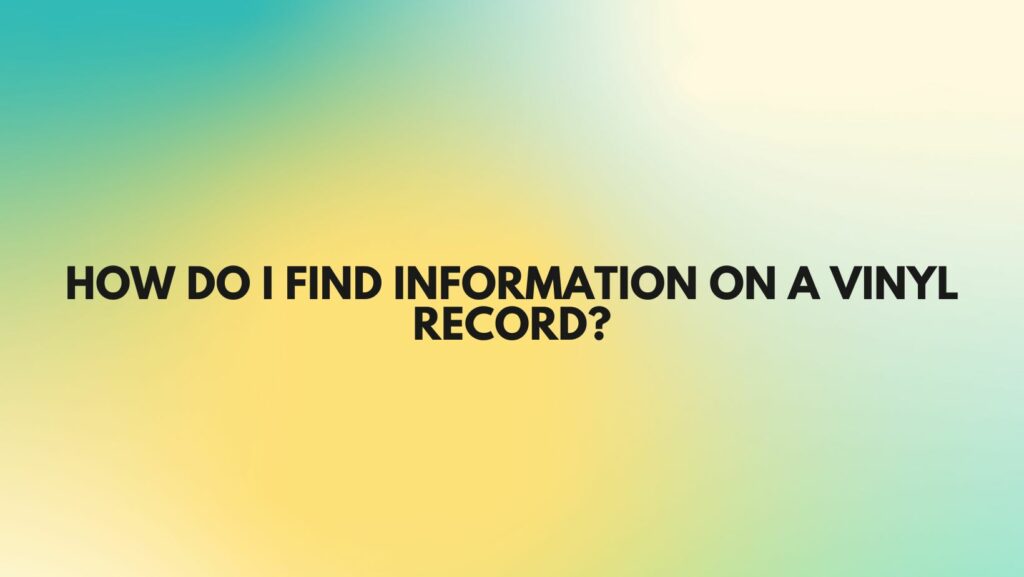Vinyl records, the iconic relics of the analog era, continue to captivate music enthusiasts worldwide. Their warm, rich sound and tangible presence evoke a sense of nostalgia and authenticity that digital formats struggle to replicate. However, the vast array of vinyl releases, spanning genres, artists, and eras, can make it challenging for collectors and casual listeners alike to identify and gather information about their records. This guide aims to equip you with the knowledge and tools to navigate the world of vinyl and uncover the stories hidden within your record collection.
1. Deciphering the Label: A Wealth of Information
The label, the central piece of art adorning the vinyl record, holds a treasure trove of information. Begin by examining the front cover, where you’ll typically find the artist’s name, the album title, and the record label itself. These details are crucial for identifying the release and narrowing down your search for additional information.
Next, flip the record over and inspect the back cover. Here, you’ll often find a tracklist, providing the names and durations of each song on the album. Additionally, the back cover may include liner notes, offering insights into the album’s creation or the artist’s inspiration.
2. The Catalog Number: A Unique Identifier
Every vinyl release carries a unique identifier known as the catalog number. This number, often prominently displayed on the label or sleeve, serves as a key to unlocking information about the record. Search online databases and resources using the catalog number to uncover details such as the release date, genre classification, and production credits.
3. Online Resources: A Treasure Trove of Information
Numerous online resources cater specifically to vinyl enthusiasts, providing comprehensive databases of vinyl releases. Discogs stands out as a leading platform, offering detailed information on millions of records, including album covers, tracklists, artist biographies, and user reviews.
Another valuable resource is Music Brainz, a collaborative music metadata database. While not as focused on vinyl as Discogs, Music Brainz provides extensive information on artists, albums, and tracks, often including release dates, artist lineups, and genre classifications.
4. Seek Expertise: The Wisdom of Collectors and Dealers
Don’t hesitate to seek assistance from experienced vinyl collectors and dealers. Their knowledge and expertise can be invaluable in identifying rare or obscure records, determining their value, and uncovering hidden gems. Attend local record fairs and engage with fellow enthusiasts to expand your network and learn from their experiences.
5. Embrace the Journey of Discovery
Identifying and researching vinyl records is an ongoing journey, filled with unexpected discoveries and rewarding moments of connection with music history. Embrace the process, enjoy the thrill of the chase, and take pride in building your personal vinyl library, a testament to your love for music and its enduring power.


